Sail the 7 Cs: Immersive Reader
In this chapter, I learned about a program called Immersive Reader. The program is an add-on to the computer that helps accessibility to reading on the computer. According to the textbook, some of the features it includes are adjusting font size and color, picture dictionary, translation tool, and parts of speech highlighter.

This tool is so important for teachers who want to create an inclusive learning environment. This tool can help those who are hearing impaired, those with dyslexia, those with language barriers, and those who just need a little extra assistance with their reading comprehension. And while it is important for those who need such accommodations, the textbook notes that it’s important for all people to have access to in general. It is a tool that can benefit everyone!
As a future ELA teacher, I plan on implementing this tool in my classroom for all students to utilize to help further their reading comprehension.
Be sure to check out this video on the Immersive Reader!
Sail the 7 C’s: Chapter 2
Microsoft Translator!
In chapter 2 of Sail the 7 C’s, I learned about a learning tool called Microsoft Translator. Microsoft Translator makes it possible for teachers to communicate with students whom do not speak the same language. This tool makes it easier for schools to have interpretation services.

Microsoft Translator can be used strictly in English as a captioning or transcription tool. It can add captions to meetings or create a transcript for a classroom conversation. Many students can benefit from having access to subtitles, captioning, or live transcription, especially if their first language is not English in an English classroom. I will definitely want to use Microsoft Translator in my future classroom if I have students whom do not speak English like me. Check out this Microsoft Translator tutorial below!
I hope you enjoyed my blog post, thanks for viewing!
Communication
After reading and annotating chapter 2 of Sail the 7 Cs, a part that really stuck with me was when the author mentioned how important communication is between teachers and students. I believe that communication is the strongest bond between students and teachers and is truly so important for their development. Students learn so much from teachers, not just the curriculum, but also life lessons. After doing some research, I found this article https://www.highspeedtraining.co.uk/hub/communication-skills-for-teachers/ that touches on effective communication skills for teachers. I think that if you are going to be a teacher, this article is a good read because it focuses on the best strategies to get through to the students. Communication is also important for the parents too because most parents like to stay informed and on top of their child and their learning needs. If the teacher can create a safe and healthy learning environment, their students will feel more comfortable talking to them about anything they need. A teacher is a big role in a child’s life and some children have no other people in their life that they feel comfortable talking to, which is why it is so important for teachers to be an open-book to their students.

Julie Barron
Microsoft Presenter Coach
Tiffany Imparato
I recently learned about a tool that I would like to share as I believe that it can make a difference in any presenter or public speaker. Microsoft Presenter Coach, uses artificial intelligence based programming to turn anyone into a presenter through practice and detailed feedback. The best part is that anyone can try it free online and it is available across various platforms. I have had my share of nervous moments presenting in front of people after hours of practice yet still not feeling fully confident and I think that this tool can be a game changer. This tool is very versatile and can be used in the classroom very easily to empower both students and teachers to speak effectively and confidently. It is easy to navigate once a person creates their content they can chose rehearse with coach while practicing their presentation the speaker will receive onscreen help to guide them along. The coaching helps smooth the presentation by helping to avoid filler words, profanity, and keep a good pace. Once complete their is a detailed report to review that includes speed, fillers words, time taken, and suggestions on sensitive phrasing to avoid. Microsoft Presenter Coach is like having your very own public speaking coach always on hand. I think that this could be very helpful for students of various ages and wish I had this this when I was younger. I can definitely envision using this in my future classroom to help boost the confidence of my young learners to build skills that will last a lifetime.
Sail the 7 Cs with Perusall
By: Dara Sborea
For this week’s blog post, we are exploring the Communicators chapter in our class textbook. For me, this was the most exciting chapter to read so far. I found myself saying, “Oh, I didn’t know that was there!” more times than I can count.
Our ability to communicate is essential in our job as educators. We all know how important it is to communicate with our students and to teach our students how to communicate with us and the world at large. What we sometimes forget is that it is equally important that WE communicate with the world at large, and especially with the families of our students.
How can this be achieved if we do not speak the same language as our students’ families, or if the family is not proficient in speaking English? Microsoft can help! Microsoft Translator is changing the way we interact with families and with students. This app service has captioning and transcription tools. Previously, many schools had to scramble to find volunteer translators to help exchange information with families. Now, teachers can steer families to a free, downloadable app and communication can start as soon as the app is downloaded.
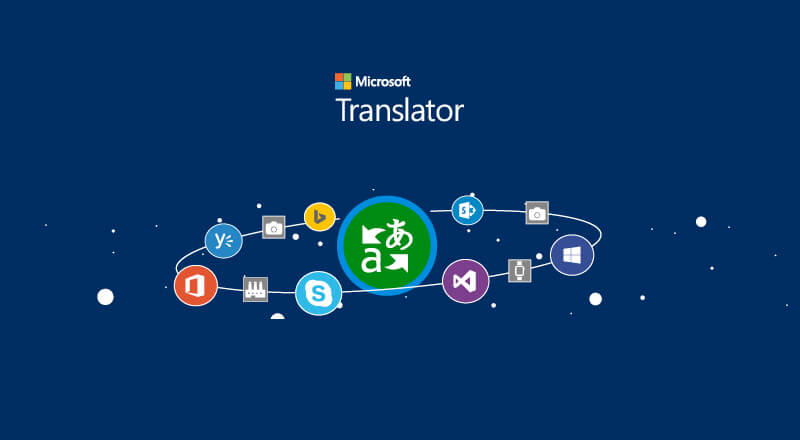
The app is already built into many programs that we regularly use. I was eager to see if this was true, so I opened Word and there it was! It was there the whole time and I had no idea. It is easy to navigate and can be used on multiple platforms. Microsoft Translator can translate from and to so many languages. It has everything from English, Spanish, French, and other commonly spoken languages to Amharic, Inuktitut, and even Klingon!

I knew I had to try out this feature to see how it works! I plan on being a French teacher, so I decided to write a few lines in English and use Microsoft Translator to see how it works. I’ve always been a little skeptical of whether or not online translators can truly get it right. I can honestly say that Microsoft Translator showed me that their online translator can certainly get it right!


I cannot wait to use the Microsoft translator app in my classroom. The example I have shown is of a class newsletter, but I am most excited about being able to communicate with families who may not have realized they can have a collaborative relationship with their children’s teacher, even if we don’t speak the same language.
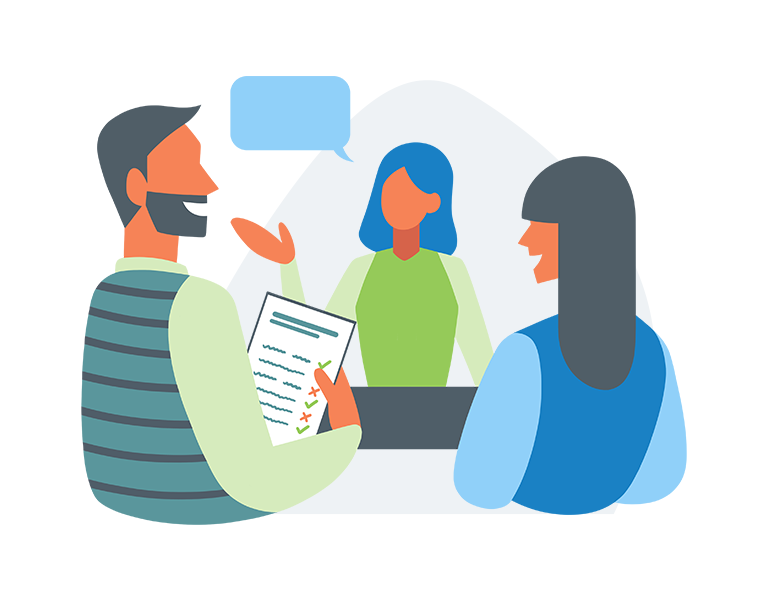
Thank you for reading my blog and make sure to follow me on Twitter! @Daradoodle124
Blog Post 5- Tatianna Competello
This week for our blog posts we are writing about something we learned in our Pursuell textbooks, based on chapter two which is “Communicators.” In this chapter, I learned about new technology tools I never heard of before. To start, I learned what the tool Immersive Readers are. This is a free tool that implements proven techniques to improve reading and writing for people, regardless of their age or ability. Immersive Reader can improve reading comprehension and increase fluency for English language learners. It can help build confidence for emerging readers learning to read at higher levels and offer text decoding solutions for students with learning differences such as dyslexia. With this tool, you have the ability to click on each word individually and be able to hear the word out loud. That is one of the best features of this app, it is called the Read Aloud. You can highlight the words as you are reading as well, to save what you have read and go back to it later. There have been studies showing that people’s fluency and comprehension skills have been extremely improved, especially when it comes to the readers paying attention and be able to focus the whole time on what they are reading. I never knew this tool was available to use and made by Microsoft. The Microsoft Immersive Reader is a free tool, built into Word, OneNote, Outlook, Office Lens, Microsoft Teams, Forms, Flipgrid, Minecraft Education Edition, and the Edge browser. These are apps that I use daily with being a college student, and now I know I can use this app with any one of these tools. This is great to know. This is also a great tool especially if English is your second language. This tool is also a great way if you have a hard time comprehending what you are reading and writing. I know for myself when I hear out loud what I am learning, and reading about it helps me remember what I am learning about, this way I just do not hear it in my head. According to our textbook, it states that “Microsoft’s mission statement is, “empower every person and organization on the planet to achieve more.” I think this is an amazing goal to have and it is so nice to see that people can have free tools provided at their fingertips in order to succeed. The best feature

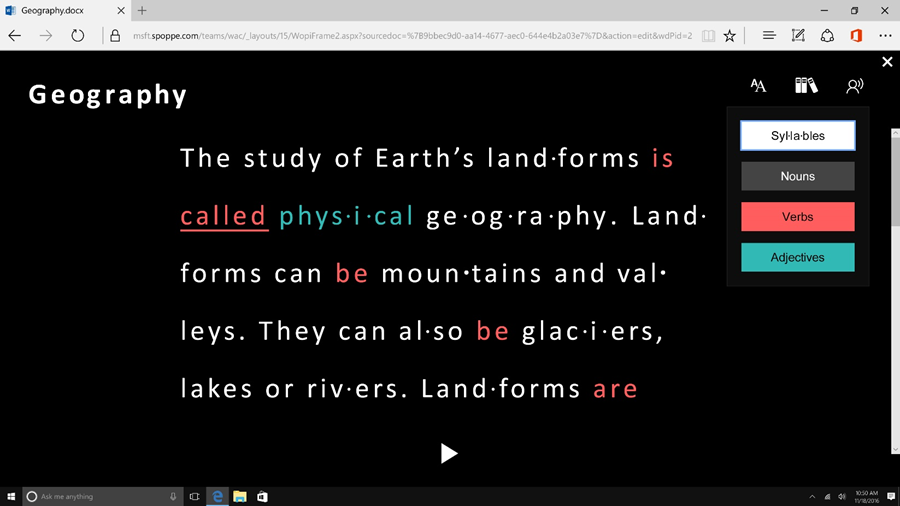
SUSTAINABLE DEVELOPMENT GOAL 4
Ensure Inclusive and Equitable Quality Education and Promote Lifelong Learning Opportunities For All

What is a Sustainable Development Goal?
The Sustainable Development Goals or Global Goals are a collection of 17 interlinked global goals designed to be a “blueprint to achieve a better and more sustainable future for all”. The SDGs were set up in 2015 by the United Nations General Assembly and are intended to be achieved by the year 2030.

Education has been a main focus for many years, but now more than ever it needs help! As we continue to endure the COVID-19 pandemic, the progress made to improve the educational system is reversing and students are falling more and more behind.
The impact of the COVID-19 pandemic on schooling is a “generational catastrophe”. Before the pandemic, progress was already slow and insufficient to achieve the education targets in the Goals. School closures caused by the pandemic have had devastating consequences for children’s learning and well-being. Hundreds of millions of children and young people are falling behind in their learning, which will have long-term impacts. One year into the COVID-19 crisis, two thirds of students worldwide are still affected by full or partial school closures. The most vulnerable children and those unable to access remote learning are at increased risk of never returning to school and of being forced into child marriage or child labour.
It is estimated that 101 million additional children and young people (from grades 1 to 8) fell below the minimum reading proficiency level in 2020 owing to the consequences of the pandemic, which wiped out the education gains achieved over the past 20 years. Reading proficiency levels could recover by 2024, but only if exceptional efforts are devoted to the task through remedial and catch-up strategies.
Just before the pandemic, 53 per cent of young people were completing secondary school globally, although the figure for sub-Saharan Africa was only 29 per cent. The rise in school completion rates may slow or even reverse depending on the duration of school closures, which are resulting in learning losses and affecting the motivation to attend school, and on the extent to which poverty might increase, adding to the obstacles faced by disadvantaged children.
Data from before the pandemic for 76 mostly low- and middle-income countries and territories covering the period 2012–2020 indicate that 7 in 10 children who are 3 and 4 years of age are on track developmentally, with no significant differences between the sexes. However, many young children are unable to attend early education because of the pandemic and so are now entirely reliant on their caregivers for nurturing care. Unsafe conditions, negative interactions with caregivers and a lack of educational opportunities during the early years can lead to irreversible outcomes, affecting children’s potential for the remainder of their lives.
The 7 Key Targets of Goal 4
Target 4.1: By 2030, ensure that all girls and boys complete free, equitable and quality primary and secondary education leading to relevant and effective learning outcomes.
Target 4.2: By 2030, ensure that all girls and boys have access to quality early childhood development, care and pre-primary education so that they are ready for primary education.
Target 4.3: By 2030, ensure equal access for all women and men to affordable and quality technical, vocational and tertiary education, including university.
Target 4.4: By 2030, substantially increase the number of youth and adults who have relevant skills, including technical and vocational skills, for employment, decent jobs and entrepreneurship.
Target 4.5: By 2030, eliminate gender disparities in education and ensure equal access to all levels of education and vocational training for the vulnerable, including persons with disabilities, indigenous peoples and children in vulnerable situations.
Target 4.6: By 2030, ensure that all youth and a substantial proportion of adults, both men and women, achieve literacy and numeracy.
Target 4.7: By 2030, ensure that all learners acquire the knowledge and skills needed to promote sustainable development, including, among others, through education for sustainable development and sustainable lifestyles, human rights, gender equality, promotion of a culture of peace and non-violence, global citizenship and appreciation of cultural diversity and of culture’s contribution to sustainable development.
My Reflection on SDG Goal 4: Ensuring inclusive and equitable quality education and promoting lifelong learning opportunities for all.
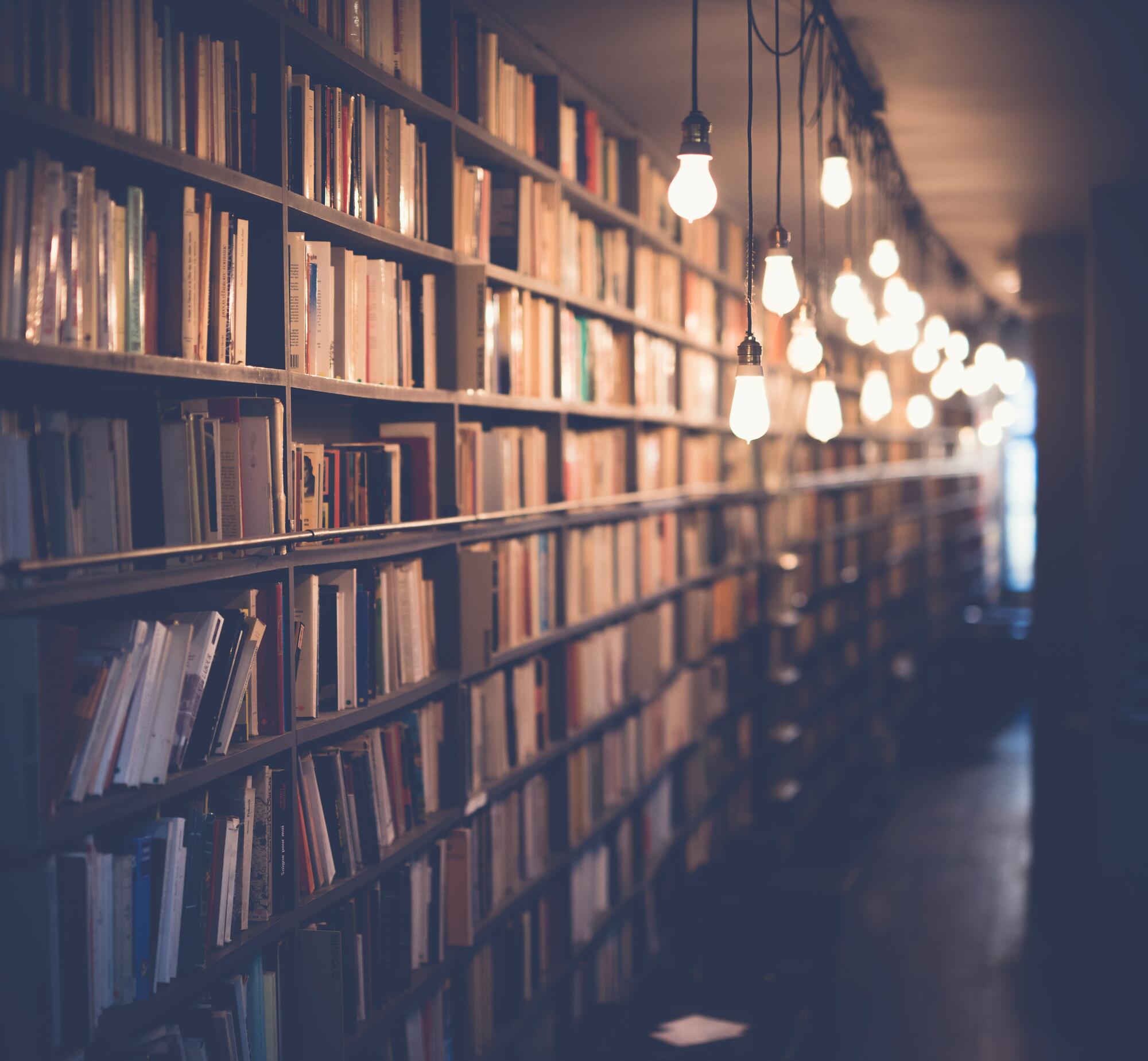
Education for all has always been an integral part of the sustainable development agenda. On the UN’s website under the goal 4 link in the Sustainable Development Goals people are able to find all the information regarding our targets in education and how close we are to achieving those targets.
Back in 2002 The World Summit on Sustainable Development adopted the Johannesburg Plan of Implementation (JPOI) which reaffirmed Millenium Development Goal 2 in achieving universal primary education by 2015 and the goal of the Dakar Framework for Action on Education for All to eliminate gender disparity in primary and secondary education by 2005 and at all levels of education by 2015. Also addressed by the JPOI was the need to integrate sustainable development into formal education at all levels, as well as through informal and non-formal education opportunities.
Covid-19 has devestatingly impacted our progress in achieving SDG #4. Because of school closures and lack of virtual educational resources for many low and middle class students. Academic achievement rates have drastically fallen. According to the UN website we have lost over 20 years of progress because of the pandemic.

Under goal 4 there were seven key targets and three sub targets that the UN had hoped to achieve by 2030. These key targets included:
- ensuring that all girls and boys complete free, equitable and quality primary and secondary education leading to relevant and effective learning outcomes
- ensuring that all girls and boys have access to quality early childhood development, care and pre-primary education so that they are ready for primary education
- ensuring equal access for all women and men to affordable and quality technical, vocational and tertiary education, including university
- substantially increasing the number of youth and adults who have relevant skills, including technical and vocational skills, for employment, decent jobs and entrepreneurship
- eliminating gender disparities in education and ensure equal access to all levels of education and vocational training for the vulnerable, including persons with disabilities, indigenous peoples and children in vulnerable situations
- ensuring that all youth and a substantial proportion of adults, both men and women, achieve literacy and numeracy
- ensuring that all learners acquire the knowledge and skills needed to promote sustainable development, including, among others, through education for sustainable development and sustainable lifestyles, human rights, gender equality, promotion of a culture of peace and non-violence, global citizenship and appreciation of cultural diversity and of culture’s contribution to sustainable development
- Build and upgrade education facilities that are child, disability and gender sensitive and provide safe, non-violent, inclusive and effective learning environments for all
- By 2020, substantially expand globally the number of scholarships available to developing countries, in particular least developed countries, small island developing States and African countries, for enrolment in higher education, including vocational training and information and communications technology, technical, engineering and scientific programmes, in developed countries and other developing countries
- By 2030, substantially increase the supply of qualified teachers, including through international cooperation for teacher training in developing countries, especially least developed countries and small island developing States
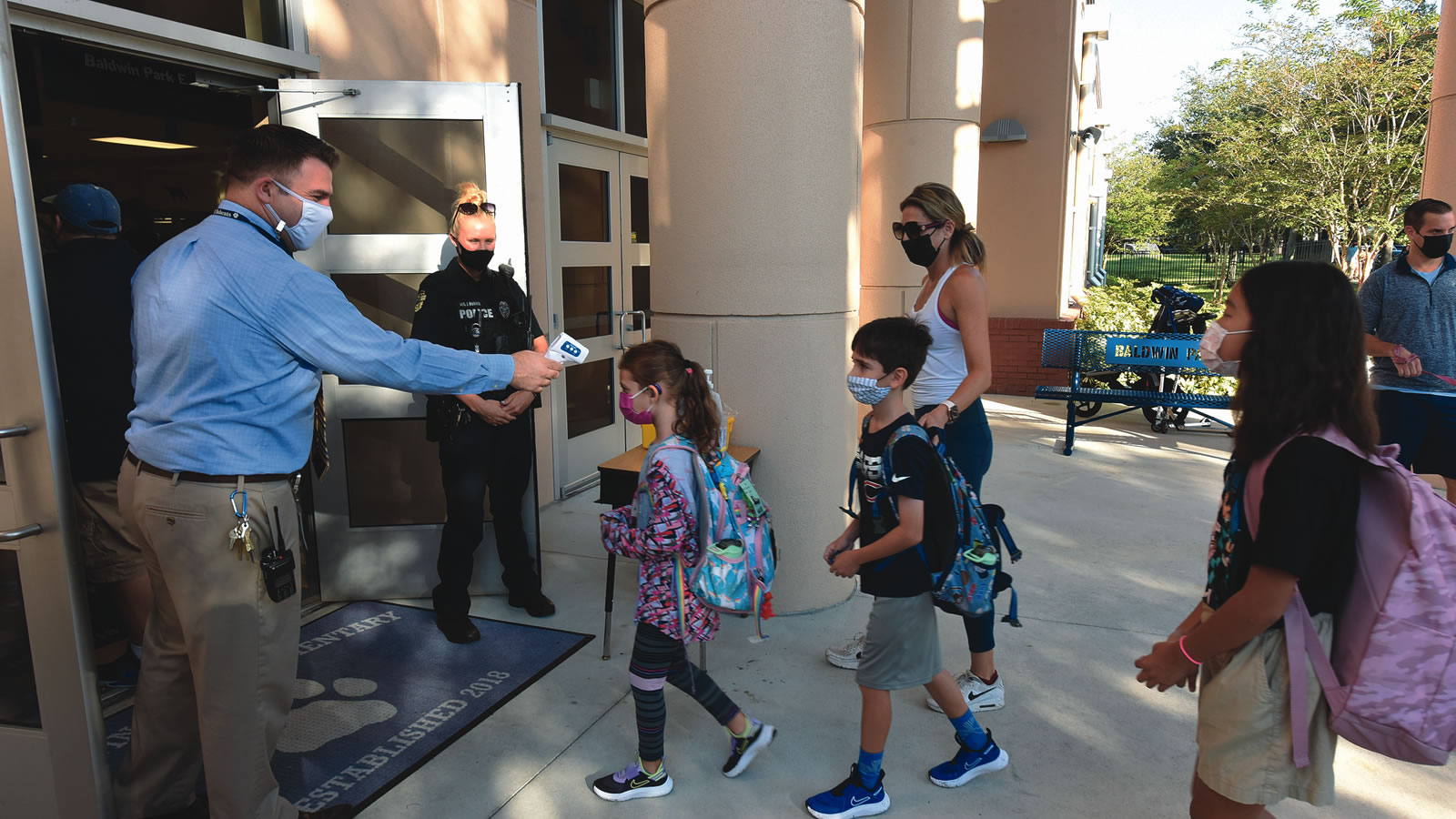
According to the website the impact of the COVID-19 pandemic on schooling is considered a “generational catastrophe”. Before the pandemic, we were behind in achieving the education targets in the Sustainable Development Goals. The school closures caused by the pandemic have had devastating consequences by impacting children’s learning and well-being. We are now one year into the COVID-19 crisis, and “two thirds of students worldwide are still affected by full or partial school closures. The most vulnerable children and those unable to access remote learning are at increased risk of never returning to school and of being forced into child marriage or child labour.”
To learn more about sdg goal 4 and what we can do to help our nations get back on track and aquire this goal by 2030. Go to this link and check out the many resources available to become an ambassadore of change.
Thanks for reading
Bayta Owens #GEN2108
Learn About CBYX
What really is the Congress Bundestag Youth Exchange? The CBYX is an international student exchange program that is funded by the U.S and german Governments that provides scholarships for high school students that are American or German. This allows students to travel and learn Abroad for a year of homestead academics.

How it Actually works

Students will have a placement with a carefully selected German host family and receive Admission to a German high school with Language lessons upon arrival in Germany. Their students will have orientation programs. Then they will have a cultural experience as a whole. In the program, the students attend meetings with U.S. and German Governments.
Why I was Impressed
I personally chose this blog because I felt related to it as I’m a Spanish language major. I came here as a high school student myself and now I’m studying to become a Teacher. This program has some pretty incredible features and I think studying abroad in any form is just an amazing experience.
All About the Culture
who wouldn’t want to experience a culture and learn a language through a full immersion experience? Learn about a culture first-hand by living with a host family and attending high school. This leads to a higher level of cultural acknowledgment that leaves you prepared for an ever-expanding competitive world.

Reflecting on the Sustainable Development goals
(SDG) Sustainable Development Goals is a plan to take action in creating a safer reality for peace and prosperity to end deprivations for the people and the planet. To combat these deprivations people have came together to formulate strategies in hopes to help better climate change, health, education, reduce inequalities, and economic growth all by the year 2030.

The goal that interests me the most was quality education, as I, myself becoming a future educator it is important for everyone to make sure they get a opportunity at education like most people are able to. The main goal for quality education is to ensure inclusive and equitable quality education and promote lifelong learning opportunities for all. A target for quality education is to by 2030, is for all girls and boys to complete free,equitable and quality primary and secondary education leading to relevant and effective learning. Another target that I found important was that by 2030, to have equal access for all women and men to affordable and quality technical, vocational and tertiary education, including universities. These are some goals that are to help the direction education and shape it for the better.
Thanks for Reading! 🙂
Recent Comments